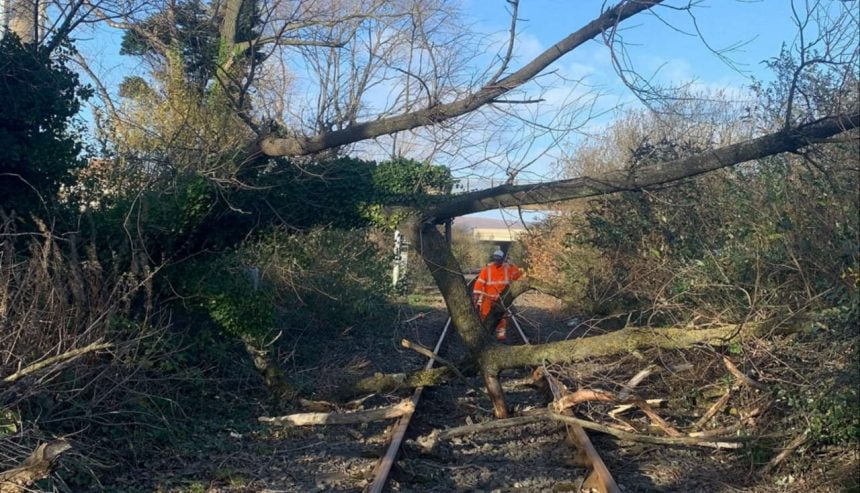Since September 2020, there have been 112 reports from train drivers and railway staff of fallen trees or branches on railway lines in Wales, with 35 trains actually hitting a fallen tree or branch on the track.
High winds during winter storms are responsible for many of the trees that end up on the track, one example being the recent Storm Arwen which brought 81mph winds across parts of Wales, causing 41 weather-related incidents that included 20 trees falling on the track and the rest involving debris on the railway or branches causing obstruction.
Hazardous trees present a huge safety risk for the railway, putting passengers and train staff in danger. They also result in long delays and disruption to passenger and freight services when engineers are called out to remove them from the track.
To help tackle this problem, in Summer 2020, Network Rail Wales & Borders began its biggest ever survey along every mile of track in Wales to identify hazardous trees alongside the railway, and then safely remove as many as possible. This is an enormous task that is expected to take around two years to complete and involves the inspection of almost 1,000 miles of track. Natural Resources Wales supports Network Rail for carrying out this survey.
The main concern of Network Rail's environmental specialists is the presence of the fungal disease ‘ash dieback': This is a Europe-wide problem that scientists predict will threaten up to 80% of the species, and prevent water and nutrients from flowing throughout ash trees, causing them to slowly die. Trees affected by ash dieback are vulnerable to winds of over 40mph.
To help prevent the spread of ash dieback, Network Rail tree surgeons will work to remove only infected ash trees, allowing genetically-resistant ones to flourish and repopulate the species; less competition means more light and space for the healthy trees to grow. To maintain and increase biodiversity, trunks of removed trees will be left to become homes for roosting bats and over 60 species of lichen, three of which are endangered.
Network Rail is also looking at schemes to replant trees on their land. The aim is to establish native species with ‘high-habitat value' and to match the number of trees removed. All lineside sites where hazardous trees are removed will be passed onto environment and ecology teams to determine whether they are suitable for a replanting scheme.
Mitchell Pether, asset engineer at Network Rail, said: “Our top priority is safety, so removing these trees succumbing to ash dieback is crucial in order to protect the line, our passengers, and staff.
“We also want to minimise disruption for passengers and freight users while maintaining our green corridor, so this isn't just about cutting down ever lineside tree, it's a targeted and proactive approach that will protect the line and increase biodiversity.”
Alexia Course, Transport for Wales' Director of Transport Operations, said: “As we have recently seen with Storm Arwen, extreme weather is making it more challenging than ever to run a safe and reliable railway in Wales and the borders.
“The removal of hazardous trees is essential in keeping passengers and our train drivers safe. The removal will also help us minimise delays and disruptions and will ensure that our customers receive the service they deserve.'
Andrew Wright, specialist advisor, Natural Resources Wales, said: “Ash Dieback is one of the most significant tree diseases to affect the Welsh landscape, ash trees affected by this disease potentially pose a significant health and safety risk and we understand the measures taken by Network Rail to reduce the risks and welcome any work to recover lost biodiversity.”

Good and about time. I hope they repeat the process for all lines in England.